The Big Review: Walrus Audio Melee – thick distortion plus modulated reverb equals portable armageddon
Get ready to be overwhelmed, because Walrus’s latest joystick-equipped stompbox can push big distortion through even bigger reverb – or vice versa
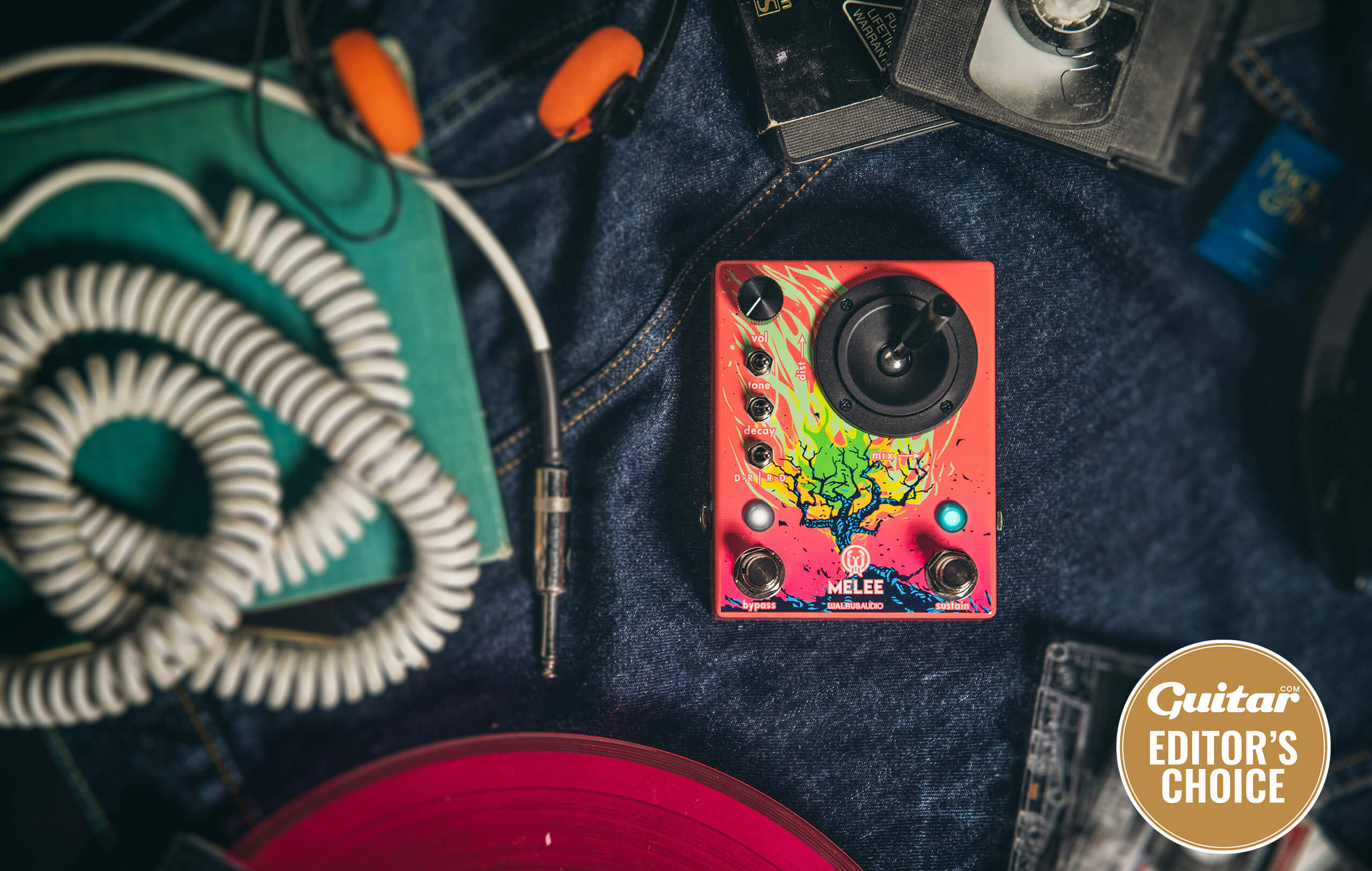
Review Overview
Our rating
9
Our verdict
You know ‘shoegaze’ was never supposed to be an actual genre, right? This was a gently mocking term of abuse made up by music hacks some time around 1990 to describe bands who hid their faces behind floppy fringes – and hid their tunes behind walls of distortion, delay and reverb.
But it’s hip to be insecure in 2023 – and it’s also hip, once again, to turn the plinky twang of an electric guitar into a cosmic swirl of otherworldly enormousness. So could the Walrus Audio Melee be your perfect shortcut to soundscaping nirvana?
Many players nowadays have a carefully curated pedalboard about the size of Belgium – this is a whole culture in itself, and the Melee isn’t going to make it go away overnight. But on paper at least, there’s enough going on in this combined reverb and distortion pedal to help some of us make some real floorspace savings.
Walrus calls it a ‘wall of noise’ pedal, and we’ve got a pretty good idea what to expect based on that description alone. The modulated reverb has three modes – ambient, octave down and reverse with feedback – and the clever part is that, with the flip of a toggle switch, you can put it before or after the distortion.
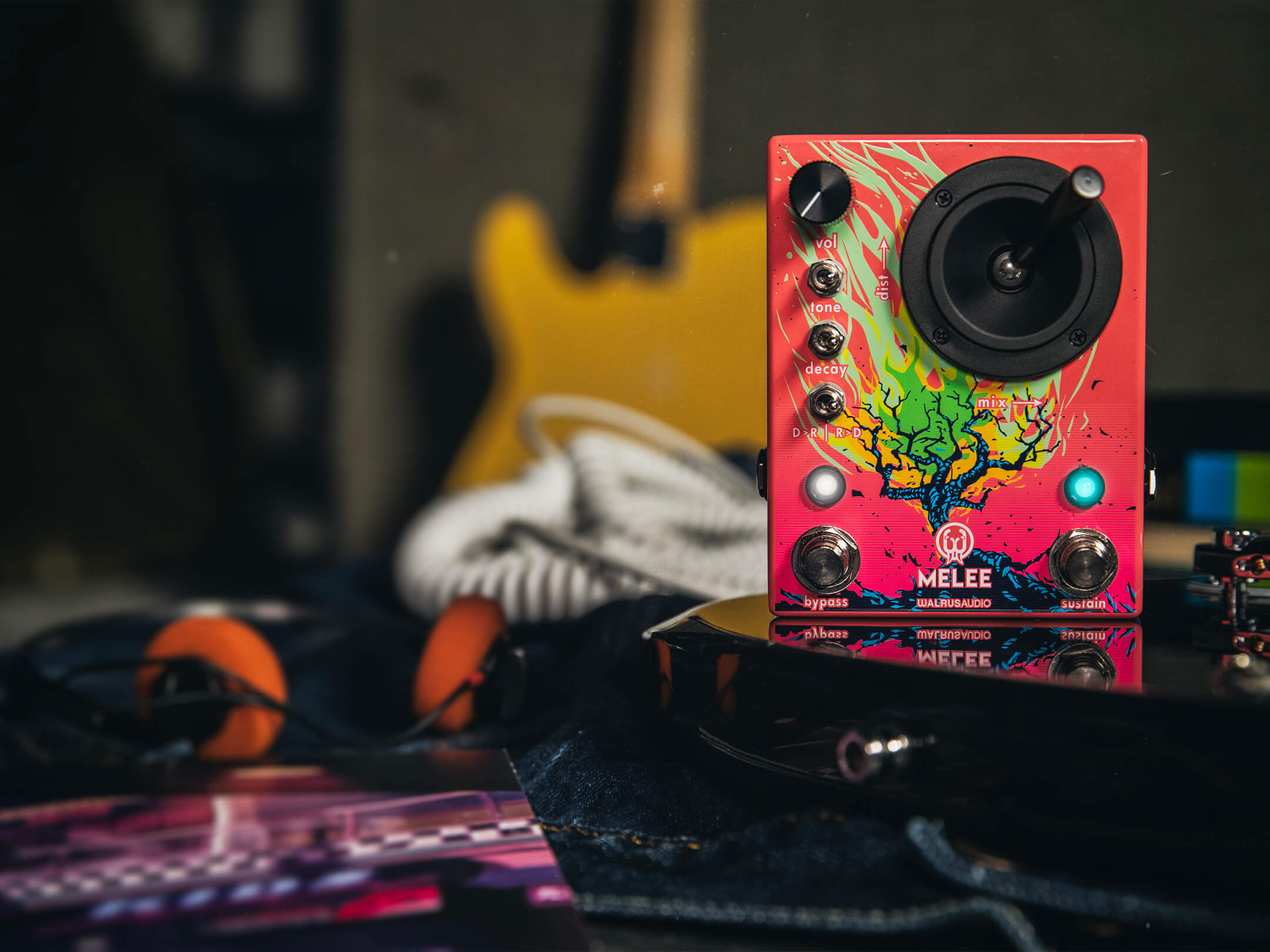
Each mode has its own LED colour and you can cycle through them by pressing both footswitches together. Both footswitches? Yep, the one on the right – which is either momentary or latching depending on how long you hold it down – is there to max out the reverb’s sustain.
Aside from output volume, that just leaves two more toggle switches and… ah yes, you noticed the joystick. This is a two-axis control for reverb mix (on the ‘x’ axis) and distortion (on the ‘y’), enabling you to fiddle with both at the same time one-handed. It’s not the first time we’ve seen a joystick on a Walrus pedal: the Janus Tremolo/Fuzz has two.
And the other switches? One lets you flip between three tone settings for the distortion, the other between three decay lengths for the reverb.
But hang on, there’s one more thing you can tweak: the modulation applied to the reverb. With the bypass footswitch held down, the decay switch now toggles between high, slight and no modulation. All in all, we’ve got quite a bulging box of toys to play with here.
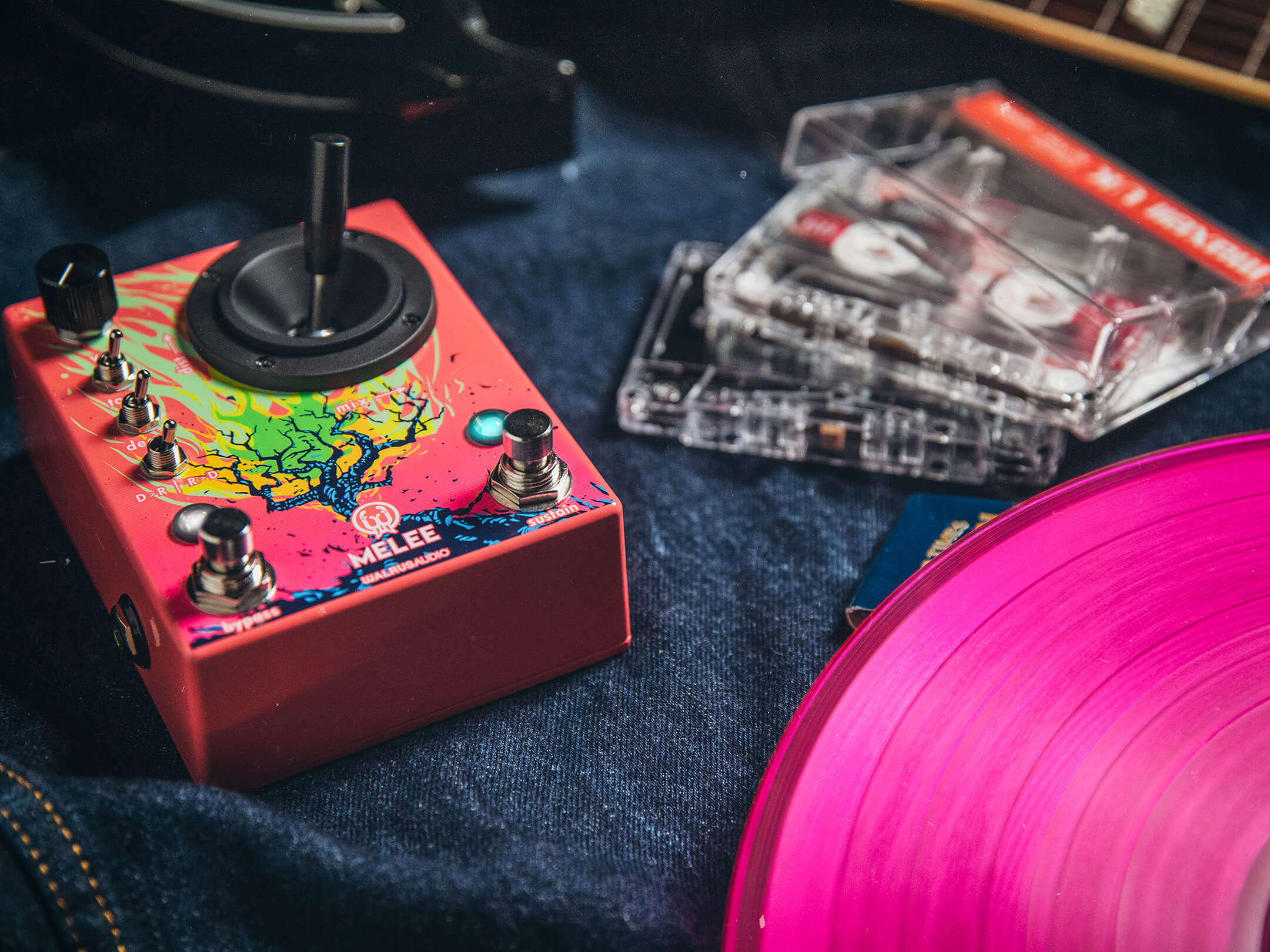
In use
Before smashing those toys together in a fever of psychedelic excess, it might be nice to inspect them individually so we know exactly what we’re dealing with. And while there’s no immediately obvious way of doing this – the two circuits are not individually switchable – the joystick can help us here.
We can hear the Melee’s reverbs applied to something like our bypass sound simply by setting the stick fully down and cranking the output level to compensate. They are, in a word, large.
‘Ambient’ mode with its pink LED is up first, and with the decay set to long it’s a classic soundscape reverb: deep, smooth and immersive. The factory default setting is without modulation, but we’re definitely hearing some subtle movement in this dreamy wash.
That’s also true in octave-down mode (yellow LED), where the added notes are nicely blended into the reverb texture rather than sounding like someone’s fallen asleep on their Whammy pedal.
There’s a hint of a pre-delay in this mode, but that’s nothing next to the reverse algorithm (blue LED), where the reverb builds from silence over the course of about a second, then repeats to fade – or doesn’t, if you flick the decay switch to the short setting.
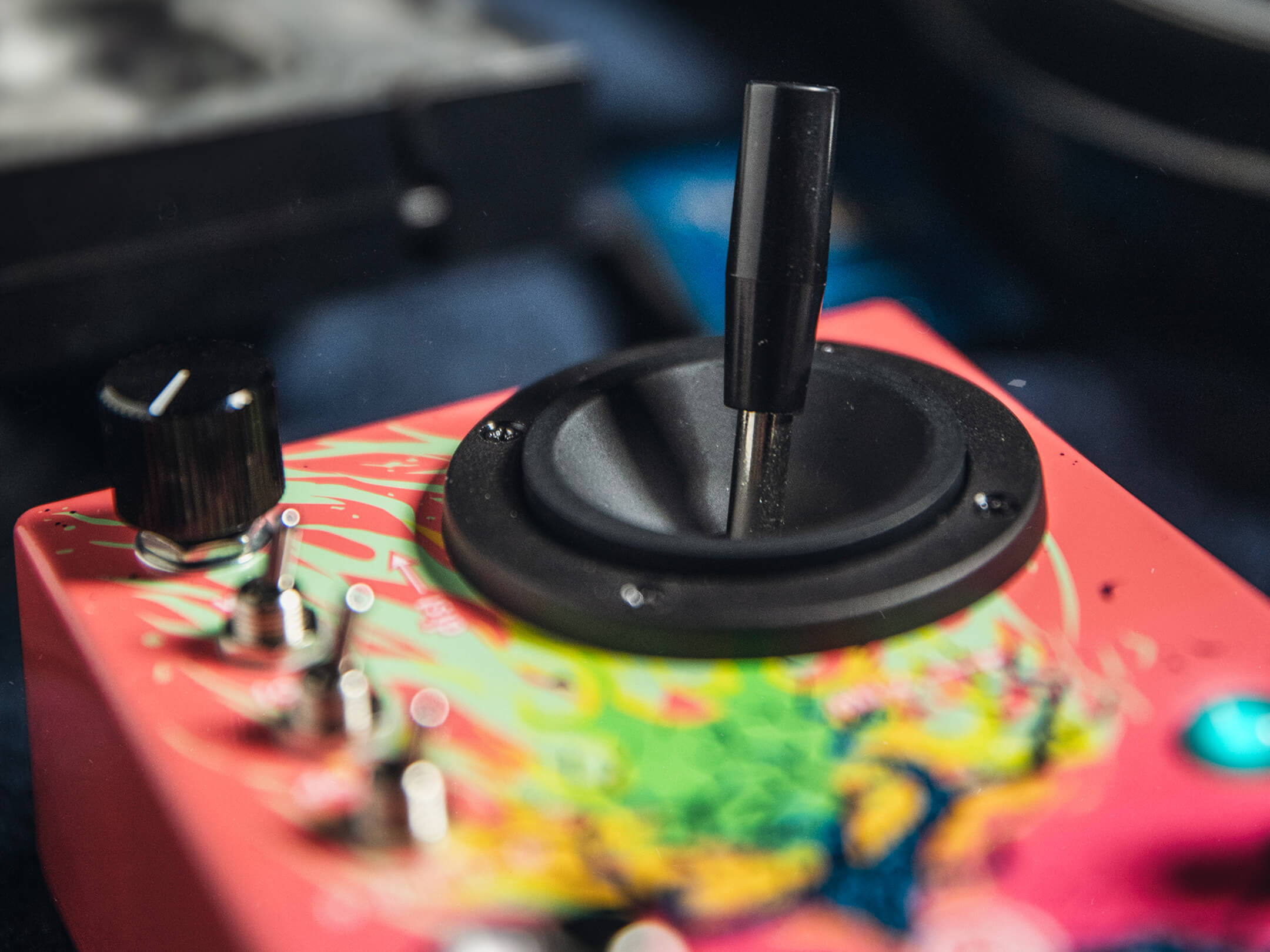
To hear the distortion on its own, we simply push the joystick fully left. Apparently based on the Walrus Iron Horse, this is a warm and throaty kind of dirt, becoming increasingly fuzzy – but not harsh – as we bump up the gain. The left and right options on the tone toggle are fairly similar, with the middle position offering something more soft and mushy.
But that’s enough picking at the edges of this all-you-can-eat noise buffet – time to kick the chairs way, climb up onto the table and jump right in.
There are no surprises with distortion before reverb: we’re taking that thick, scuzzy tone and adding a tail of rich reverberation that can go on for what feels like hours. The two shorter decay settings have their uses here, for sure, but it takes a lot of willpower – more than we’ve got, in all honesty – to move away from extra-long mode.
And when we flip the order? Now those giant ’verbs are being heavily overdriven and compressed, and the result is like switching from the pleasing warmth of a log fire to the all-engulfing inferno of some fantastical underworld. It’s absolute carnage – and it’s exactly what we came for.
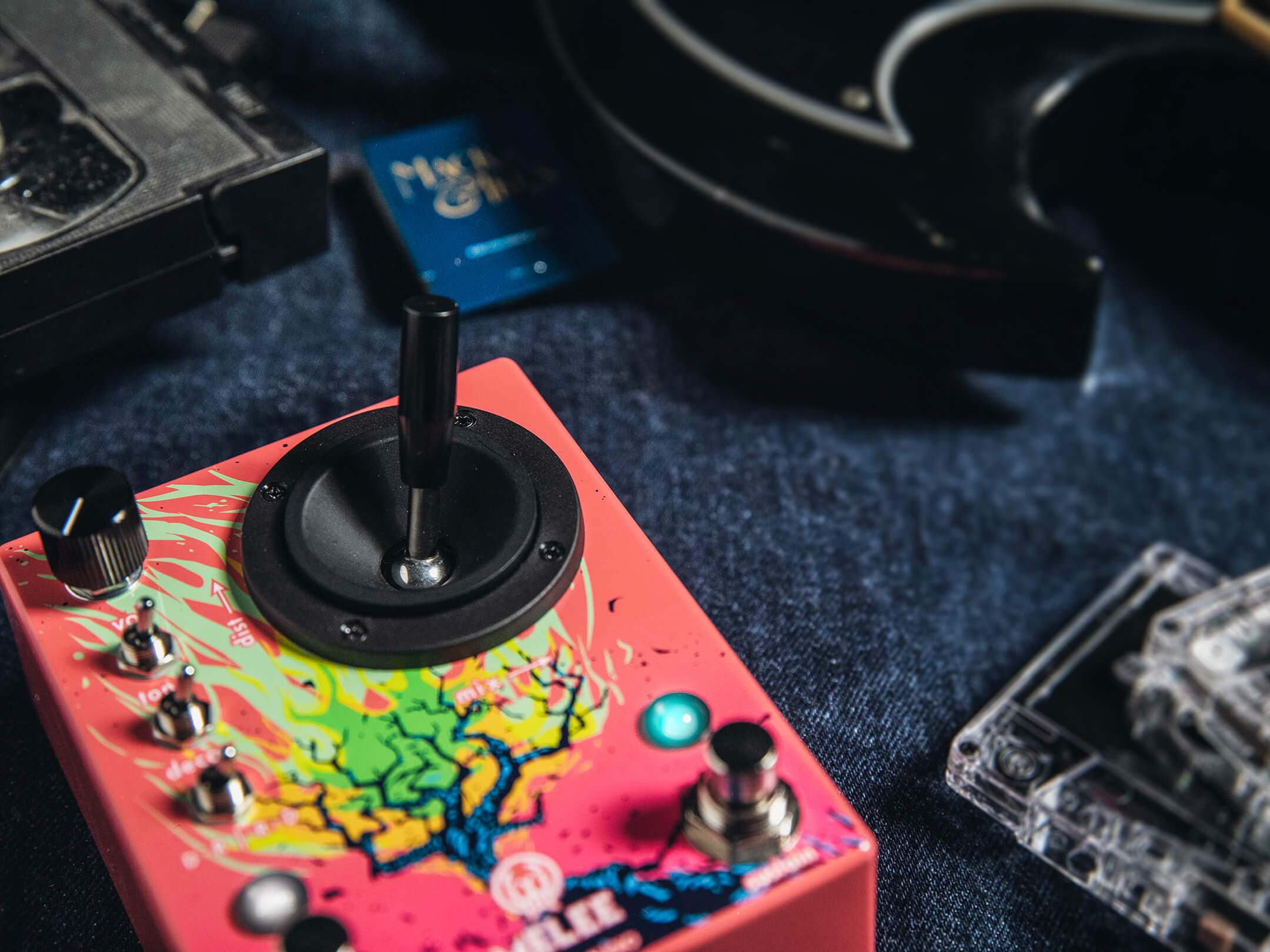
There’s so much harmonic overload, even when playing single notes, that you end up with an almost glitchy feel to the snowballing surface roar, snatches of melody struggling to rise above the swirling morass. What you get above all is an extraordinary intensity… but there are still plenty of adjustments to be made to the texture of our chaos.
First of all, it’s a lot more touch-sensitive than the average swirling morass: stroke the strings gently and it quickly pulls back from the brink, behaving almost like a ‘normal’ reverb – but one that’s ready to go wild again as soon as you feel the urge to dig in.
Then we’ve got that sustain footswitch. This doesn’t go fully infinite – and if you’ve already got the reverb set super-high then the difference it makes is minimal – but it does have one interesting feature: when it’s engaged (and the LED is flashing), anything you play over the top will have no reverb at all. Could come in handy, that.

And there’s also the modulation. Don’t get too excited about this, because it’s not exactly lush and pretty: we’re talking pitch vibrato rather than blended chorusing, and the woozy up/down sway can feel less than tasteful. Most players will probably be happy to keep this on its minimum setting.
A trick worth trying in all three reverb modes is to slam the joystick all the way to the right, which kills the dry signal completely for ultra-washiness. This certainly adds something, although it does bring us to the wider question of whether this piece of hardware is really the most practical option for the pedal. It’s a circular control for a rectangular function, and we wonder if a joystick mounted in a square gate – offering edges to slide up and down, and corners to slam into – would have felt more intuitive.
That’s about our only criticism, though. Even the mono-only output – something we felt held back Walrus’s last zany soundscaper, the Lore – doesn’t feel like an issue with the Melee, perhaps because this one’s more about intense blastage than laid-back dreamitude. And if you do insist on stereo, you’re free to add it with other pedals later in the signal chain. Well, that Belgium-sized board isn’t going anywhere just yet, is it?
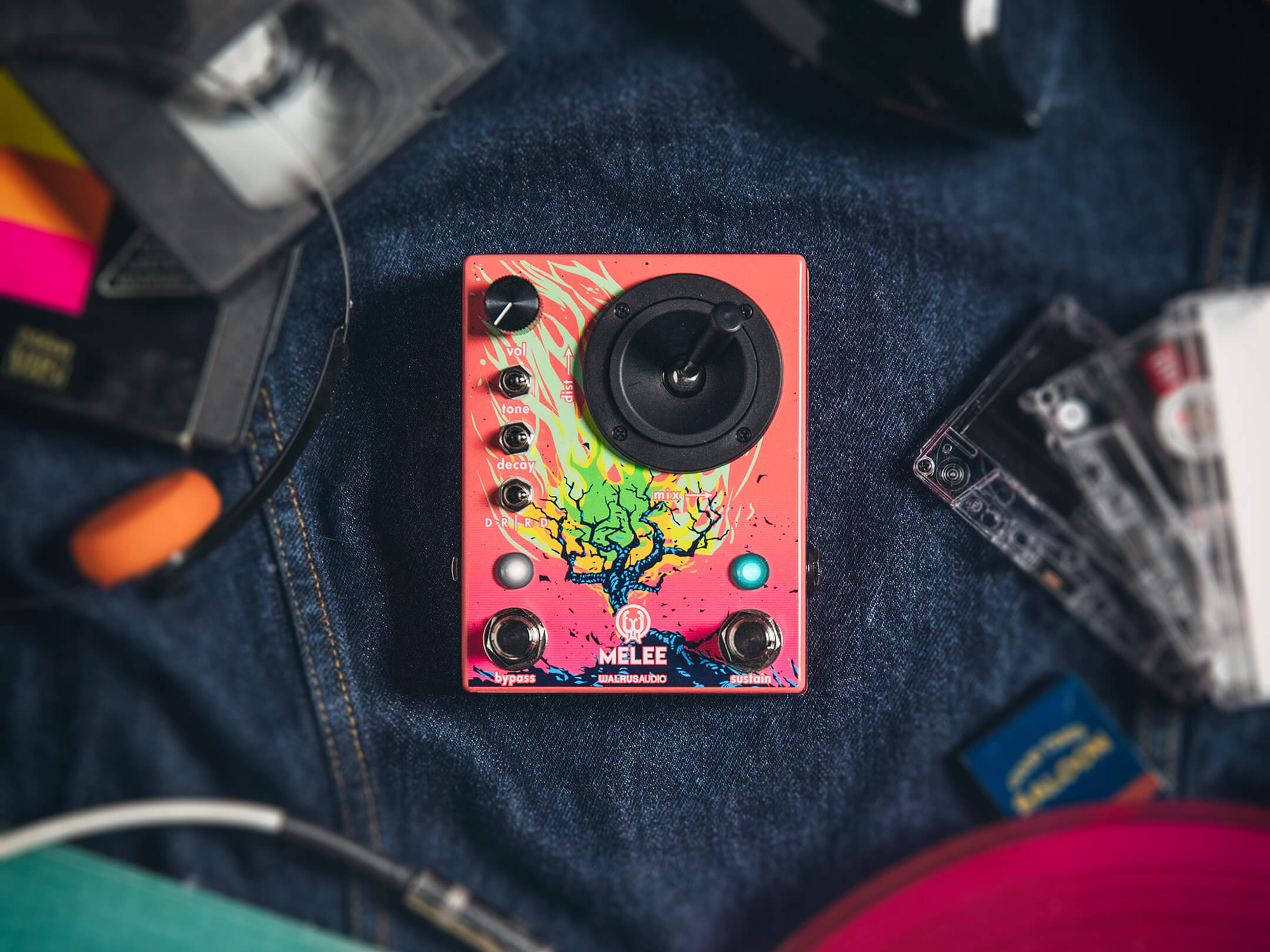
Key Features
- Price £305
- Description Reverb and distortion pedal, made in the USA
- Controls Output volume, three-way switches for distortion tone and reverb decay, effect order switch, joystick for distortion gain and reverb mix; bypass and sustain footswitches
- Features Switchable DSP/true bypass, powered by nine-volt mains supply only (200mA)
- Dimensions 119 x 101 x 80mm
- Weight 830g/1.8lb
- Contact walrusaudio.com
